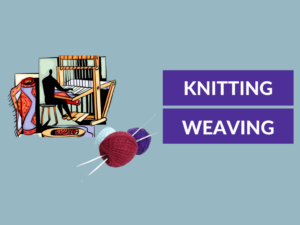Difference Between Cross Stitch and Embroidery
Embroidery and cross stitch are two popular forms of needlework that allow individuals to create beautiful and intricate designs on a variety of fabrics. While they share some similarities, such as the use of a needle and thread, there are also some key differences between cross stitch and embroidery.
What is Cross Stitch?
Cross stitch is a form of counted thread embroidery that uses X-shaped stitches to create a pattern. It is typically done on even-weave fabrics such as Aida cloth or linen, which have a consistent pattern of evenly spaced holes. Cross stitch patterns are generally based on a grid, with each square representing a stitch.
Examples of Cross Stitch
Examples of cross stitch projects include samplers, decorative wall hangings, and personalized gifts. Cross stitch can be used to create any design, from simple shapes and letters to intricate scenes and portraits. Some popular cross stitch patterns include floral motifs, animals, and geometric designs.
What is Embroidery?
Embroidery is the art of decorating fabric using a needle and thread. Unlike cross stitch, which follows a specific pattern, embroidery allows for more freedom and creativity. It can be done on a variety of fabrics, including plain cotton, silk, and even denim.
Examples of Embroidery
Embroidery can be seen in a wide range of applications, from fashion and home decor to artwork and religious practices. Examples of embroidered items include clothing embellishments, table linens, tapestries, and monograms. Embroidery designs can vary greatly, from delicate floral motifs to bold and colorful geometric patterns.
Differences Between Cross Stitch and Embroidery
| Difference Area | Cross Stitch | Embroidery |
|---|---|---|
| Technique | Uses only X-shaped stitches. | Allows for various stitches like satin stitch, French knots, etc. |
| Flexibility | Follows a specific pattern. | Allows for more creativity and freedom. |
| Materials | Usually done on even-weave fabrics, such as Aida cloth or linen. | Can be done on a variety of fabrics, including plain cotton, silk, and denim. |
| Complexity | Generally, simpler and easier to learn. | Can be more complex and requires more skill. |
| Designs | Often uses grids and charts to create designs. | Offers a wide range of design possibilities, from traditional to contemporary. |
| Fabric Preparation | Requires counting and precise placement of stitches. | Doesn’t require counting and allows for freestyle stitching. |
| Thread Usage | Typically uses stranded embroidery floss. | Can use a variety of threads, including floss, yarn, or metallic threads. |
| Finished Look | Cross stitch designs have a pixelated appearance. | Embroidery designs have a more textured and dimensional look. |
| Popular Themes | Includes floral motifs, animals, and geometric designs. | Includes a wide range of themes, from nature to abstract art. |
| Time Consumption | Generally takes less time to complete. | Can take more time due to the complexity of stitches and designs. |
Conclusion
While both cross stitch and embroidery are forms of needlework, they differ in terms of technique, flexibility, materials used, complexity, and design possibilities. Cross stitch follows a specific pattern and uses X-shaped stitches on even-weave fabrics, while embroidery allows for more creativity and can be done on various fabrics using different stitches. The finished look of cross stitch designs is pixelated, while embroidery designs have more texture and dimension.
Knowledge Check
- Which form of needlework uses only X-shaped stitches?
- Which form of needlework allows for more creativity and freedom?
- On what type of fabrics is cross stitch usually done?
- Does embroidery require counting and precise placement of stitches?
- What type of thread is typically used in cross stitch?
- How do cross stitch designs look?
- Can embroidery be done on denim fabric?
- Which form of needlework generally takes less time to complete?
- Which form of needlework offers a wider range of design possibilities?
- How are cross stitch patterns usually created?
Answer: Cross stitch
Answer: Embroidery
Answer: Even-weave fabrics like Aida cloth or linen
Answer: No
Answer: Stranded embroidery floss
Answer: Pixelated
Answer: Yes
Answer: Cross stitch
Answer: Embroidery
Answer: Using grids and charts


